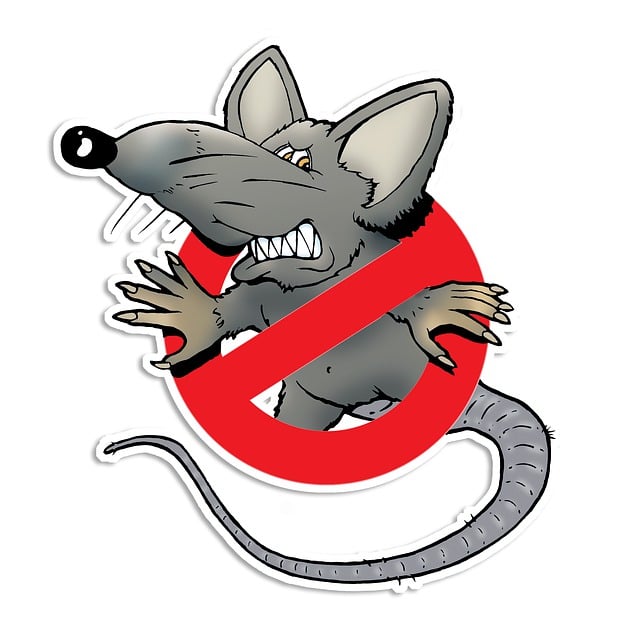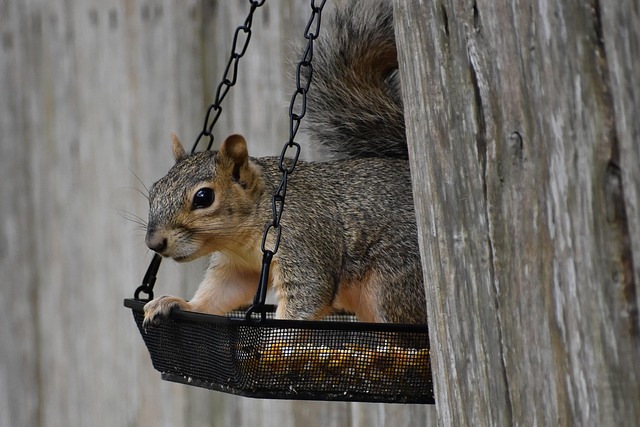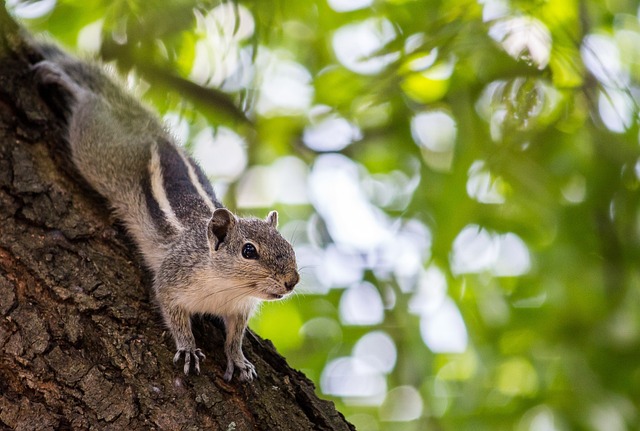Rodent infestations pose significant risks to property, prompting the need for Professional Rodent Control. Rats and mice are persistent and cause extensive damage through chewing. Experts use specialized methods for humane elimination, including traps, chemicals, and sealing entry points. Modern techniques prioritize eco-friendly and safe solutions like non-toxic baits and heat/sound technologies. Preventative measures include regular inspections, cleanliness, and strategic landscaping. Meticulous entry point identification and tailored methods are key to successful eradication and long-term prevention. Continuous maintenance post-extermination ensures rodent-free environments.
“In the realm of professional pest management, rodent control is a specialized art. These tiny creatures, though seemingly harmless, can wreak havoc on homes and businesses with their relentless gnawing and ability to breed rapidly. Understanding rodent infestations and employing effective strategies are key to achieving and maintaining a rodent-free environment.
This comprehensive guide delves into the world of professional rodent extermination, exploring various techniques, tools, and methods to ensure human safety and environmental consciousness. From identifying common pests to post-extermination care, discover the secrets to long-term relief from these persistent intruders.”
Understanding Rodent Infestations: Common Pests and Their Behaviors

Rodent infestations can be a significant concern for both residential and commercial properties, highlighting the need for professional rodent control services. Understanding the behavior of common rodent pests is crucial in implementing effective prevention and eradication strategies. Rats and mice are persistent creatures, often entering buildings through tiny gaps, attracted by food sources or warm environments. They reproduce rapidly, creating large colonies that can cause extensive damage to structures over time.
These pests display nocturnal habits, preferring the cover of darkness to forage for food and build nests. Their agile nature allows them to navigate through narrow spaces, making it easy for them to infiltrate homes and businesses unnoticed. Once established, rodents can quickly spread throughout a structure, causing various issues such as chewing through wiring, insulation, and even wooden frameworks, leading to potential fires or structural damage. Professional rodent control experts employ specialized techniques and tools to identify entry points, locate nests, and humanely eliminate these pests, ensuring a safe and pest-free environment.
The Role of Professional Exterminators in Effective Rodent Control

When dealing with rodent infestations, turning to professional exterminators for effective rodent control is often the best course of action. These experts are trained to identify signs of rodents, understand their behaviors, and employ a variety of specialized methods to eliminate them. From setting traps to applying safe yet powerful chemicals, professional rodent controllers have the tools and knowledge needed to tackle even severe infestations effectively.
One of the key advantages of hiring professionals is their ability to provide long-lasting solutions. Unlike DIY methods that may offer temporary relief, a skilled exterminator can locate and seal entry points, disrupt burrows, and implement preventive measures tailored to your property. This comprehensive approach ensures that once rodents are removed, they don’t return, providing homeowners with peace of mind and a cleaner, healthier environment.
Assessing Your Property for Potential Entry Points and Harbors

When it comes to professional rodent control, the first step is a thorough assessment of your property. Pests like rodents are adept at finding even the smallest cracks and crevices, turning them into convenient entry points. Walking around the perimeter of your home or building, inspect for any signs of damage or gaps in walls, foundations, doors, and windows. Look for loose siding, holes in screens, or places where cables and pipes enter the structure. These potential entry points should be sealed off to prevent rodents from gaining access.
Additionally, identifying areas that serve as harbors is crucial. Rodents seek out secluded spots offering protection from predators and extreme weather conditions. Attics, basements, crawl spaces, and dense vegetation are common havens. It’s important to eliminate these safe zones by ensuring proper ventilation and removing clutter or debris that could provide shelter. A well-maintained property with minimal hiding places makes it far less inviting for rodents, making professional rodent control efforts more effective.
Advanced Techniques and Tools Used in Modern Rodent Management

In the realm of professional rodent control, modern techniques and tools have revolutionized pest management. These advancements enable experts to handle infestations with precision and efficiency, ensuring a safe and effective environment for both residents and the local ecosystem. One such innovation is the use of advanced surveillance technology, including motion sensors and high-resolution cameras, which allow technicians to identify rodent activity and pinpoint problem areas without disturbing the surroundings.
Additionally, modern rodent control methods incorporate eco-friendly and targeted chemical applications. Traps are designed with improved mechanics and attractants, reducing the need for lethal measures while maintaining their effectiveness. Moreover, the integration of heat and sound technologies disrupts rodents’ behavior, providing non-lethal alternatives for certain situations. These cutting-edge tools and techniques exemplify the industry’s commitment to Professional Rodent Control, addressing infestations promptly and humanely.
Human-Safe and Environmentally-Conscious Extermination Methods

In today’s world, professional rodent control often goes beyond traditional methods to prioritize human safety and environmental consciousness. Modern pest management experts employ innovative techniques that minimize the use of harsh chemicals, ensuring a healthier environment for both residents and local ecosystems. One such method involves the use of non-toxic baits, which are designed to attract rodents without causing them harm. These baits contain attractive substances mixed with nutrient-rich elements, encouraging rats and mice to consume them voluntarily. As the poisoned bait is typically encapsulated or covered in a tasteless coating, it avoids accidental exposure to non-target species.
Additionally, professionals may employ mechanical traps as a safer alternative. These traps humanely capture rodents alive, allowing for subsequent relocation or, in some cases, local disposal without causing harm. Such methods not only address the immediate rodent infestation but also contribute to long-term prevention by disrupting the rodents’ food sources and habitat, deterring future invasions. This holistic approach to professional rodent control is beneficial for both residential and commercial properties, offering effective solutions while maintaining a responsible stewardship of the environment.
Preventative Measures: Long-Term Solutions for Rodent-Free Living

Preventative measures are crucial components of long-term professional rodent control strategies. Sealing entry points, such as gaps in walls, floors, and ceilings, is a fundamental first step. This physical barrier prevents rodents from accessing buildings, acting as an effective, long-lasting solution. Regular inspections are also vital; identifying potential entry points and signs of infestation early can stop issues before they escalate.
Additionally, maintaining cleanliness and reducing food sources is key. Storing food in airtight containers, cleaning up spills immediately, and keeping areas free from clutter creates an unappealing environment for rodents. Landscaping practices, such as trimming bushes away from exterior walls and removing potential nesting sites, can also deter rodents, making it easier to maintain a rodent-free living space over time.
Dealing with Common Challenges During Rodent Extermination

Dealing with common challenges during rodent extermination is an essential aspect of ensuring effective and long-lasting results in professional rodent control. One major hurdle is identifying and locating all entry points where rodents have penetrated a structure, as these must be sealed to prevent reinfestation. This meticulous process involves thoroughly inspecting every nook and cranny, from walls and floors to attics and basements, to pinpoint potential hiding spots and places where rodents may be nesting.
Another challenge lies in the use of appropriate methods tailored to specific rodent species and their behaviors. Different rodents, such as mice or rats, require distinct strategies for control, including setting traps, applying repellents, or utilizing baiting systems. Professional exterminators must consider environmental factors, human safety, and local regulations when selecting the most suitable and humane methods for each situation, ensuring both effectiveness in eliminating existing infestations and preventing future recurrences of rodent problems.
Post-Extermination Care and Maintenance Tips for a Pest-Free Home

After professional rodent extermination, maintaining a pest-free home requires sustained effort and proper care. Keep your space clean and free of clutter to minimize hiding places for any potential intruders. Regularly vacuum and mop floors, and ensure all food is stored in airtight containers. This simple step can prevent rodents from returning due to easy access to food sources.
Additionally, seal any gaps or cracks around doors and windows, using caulk or steel wool to fill openings larger than 1/4 inch. Maintain a clean yard by trimming bushes and trees, as well as removing potential food sources like bird feeders or pet food bowls from areas close to your home’s exterior. Regular inspection of your property for any signs of rodent activity can help detect issues early, ensuring that professional rodent control measures remain effective over time.
